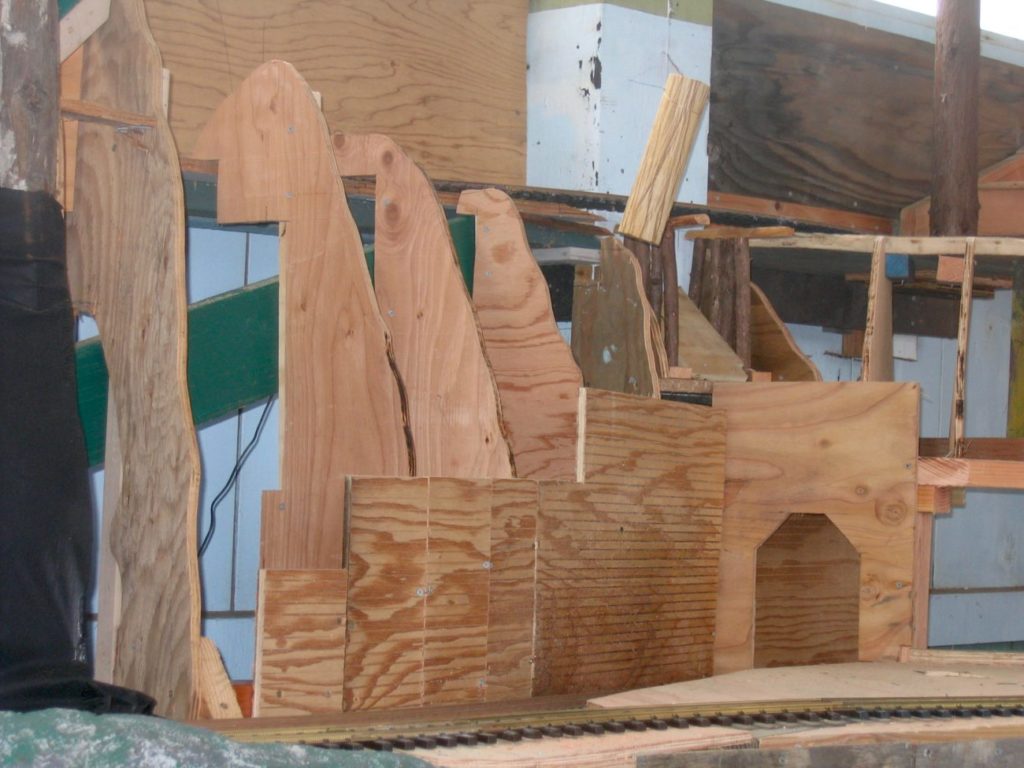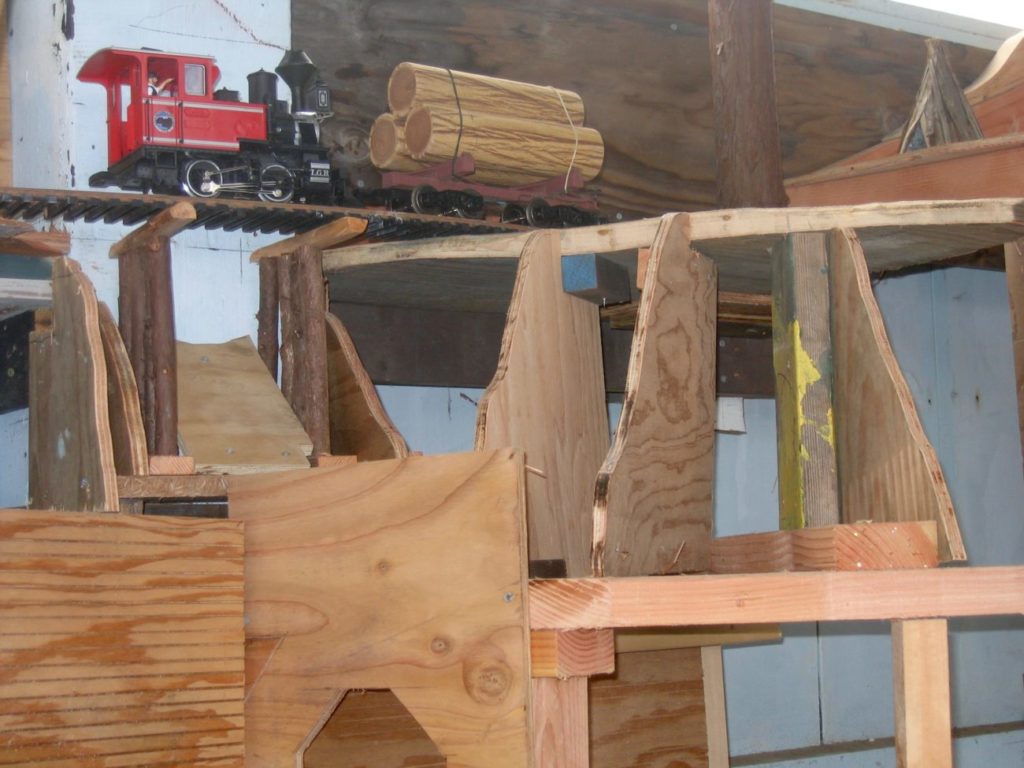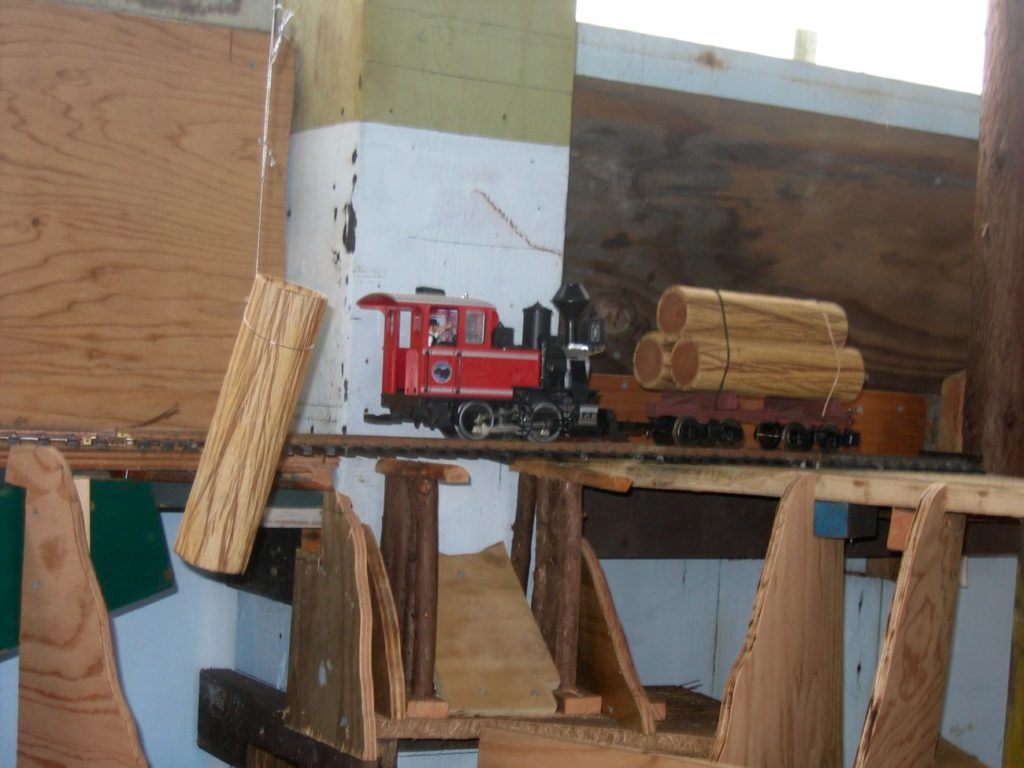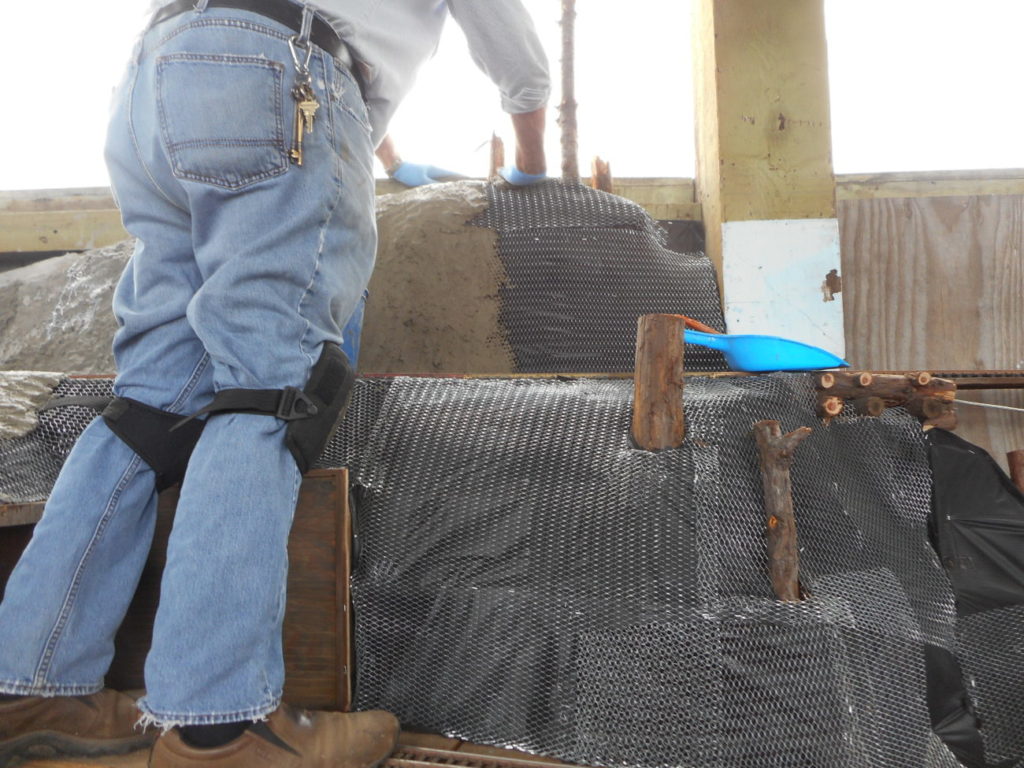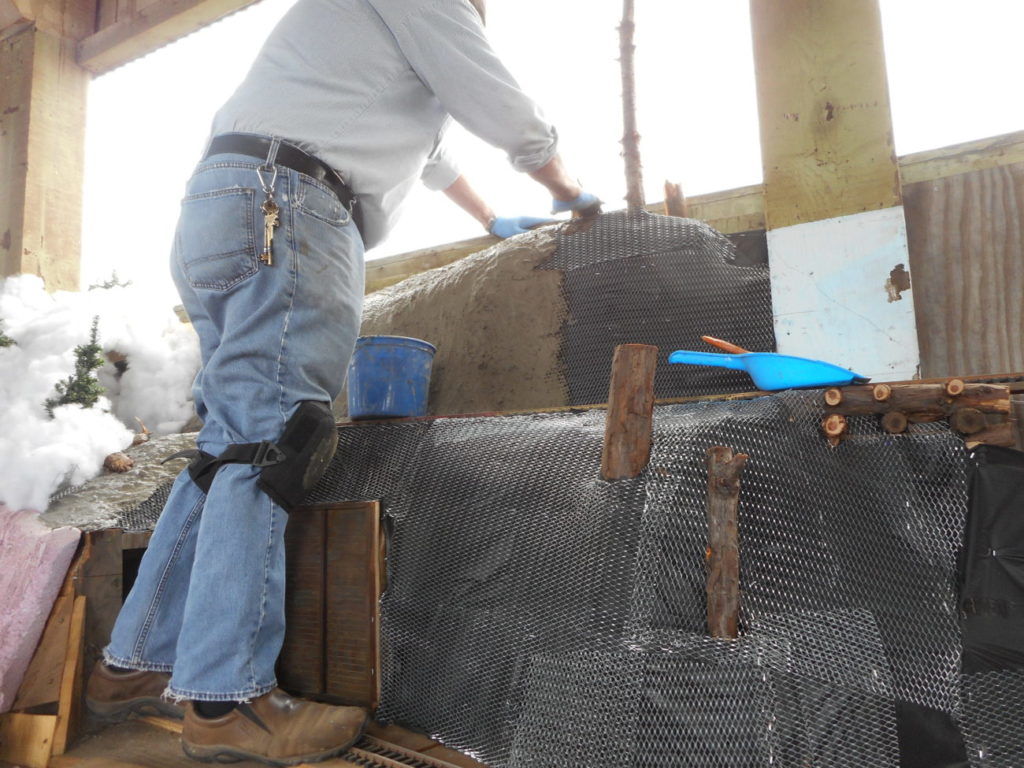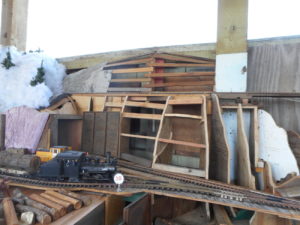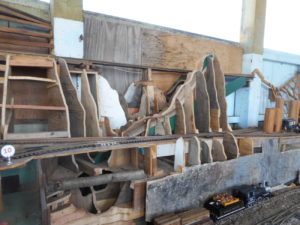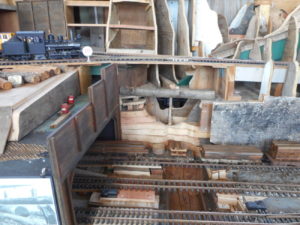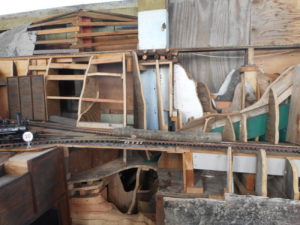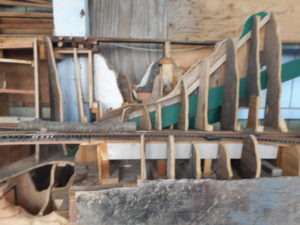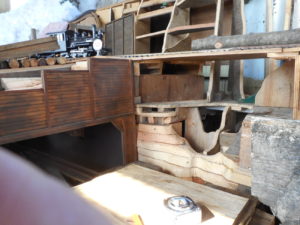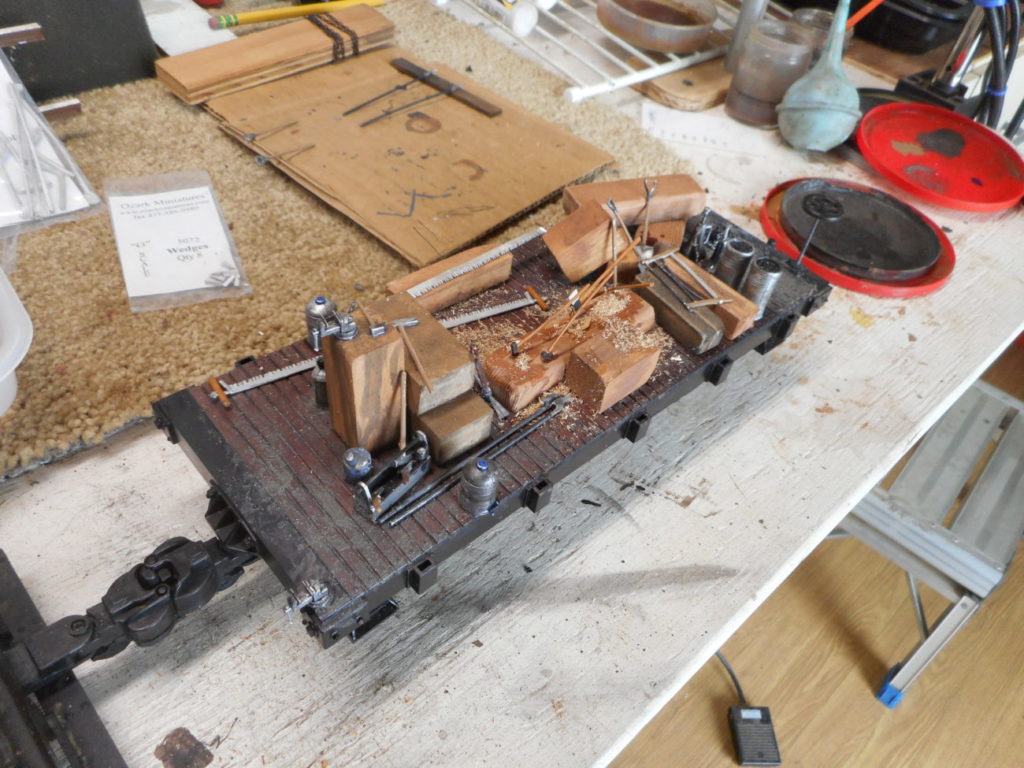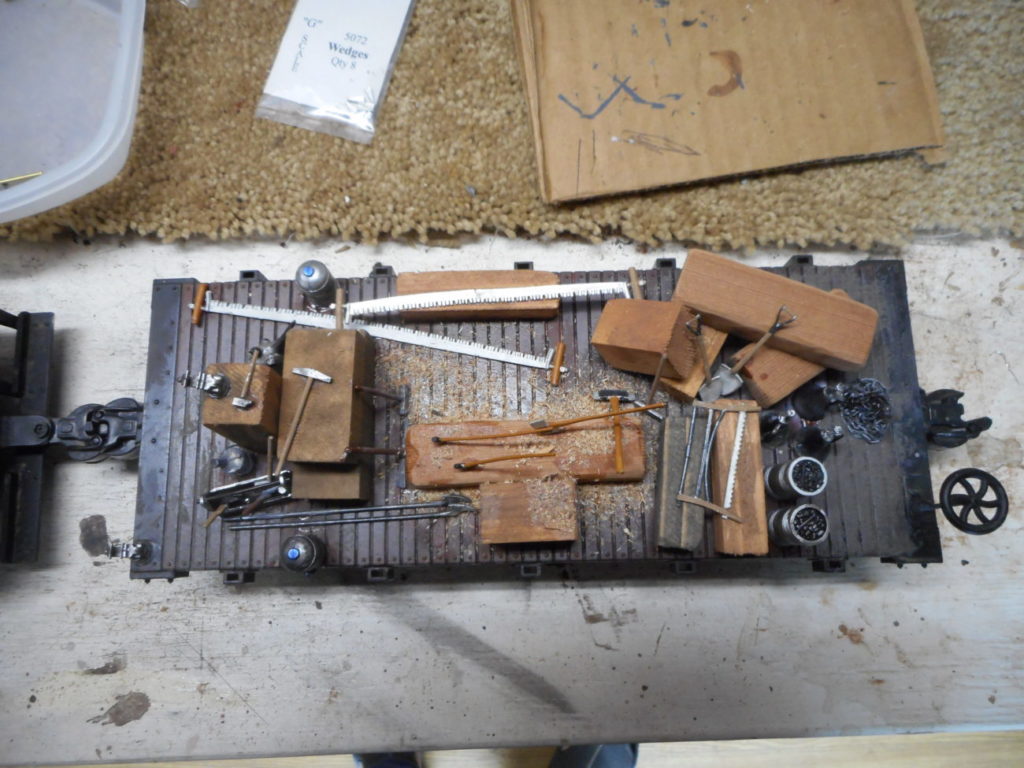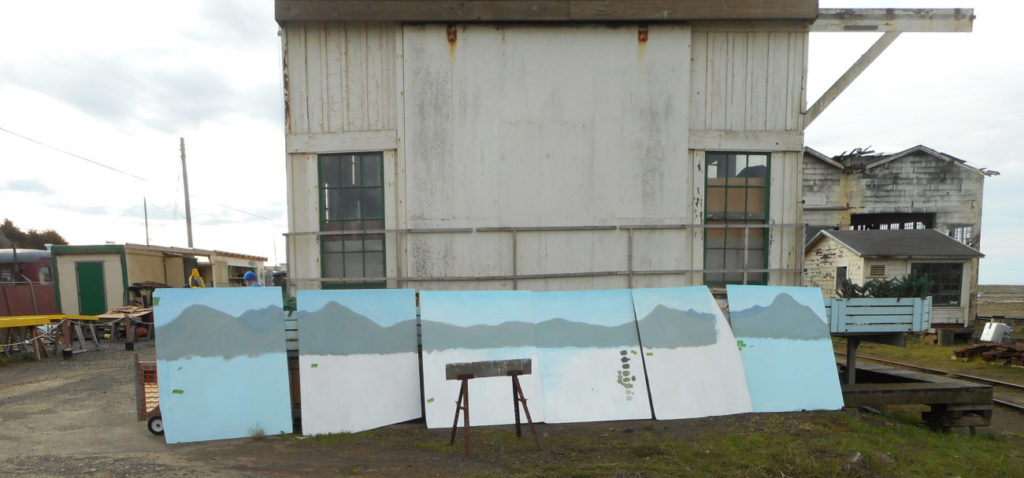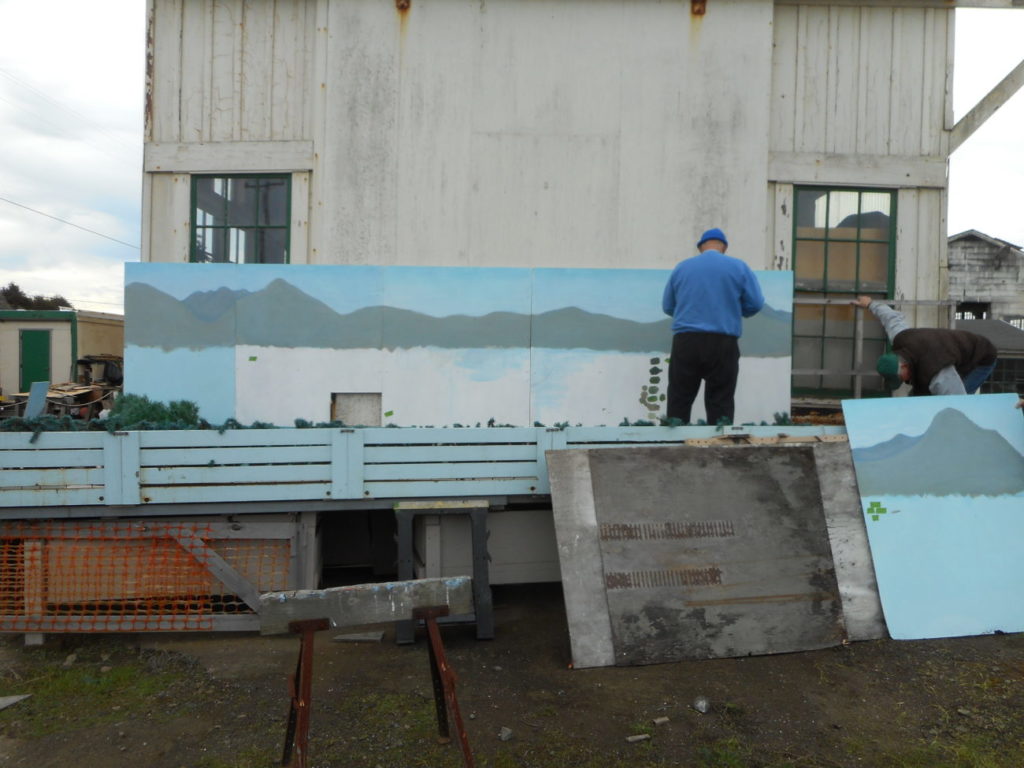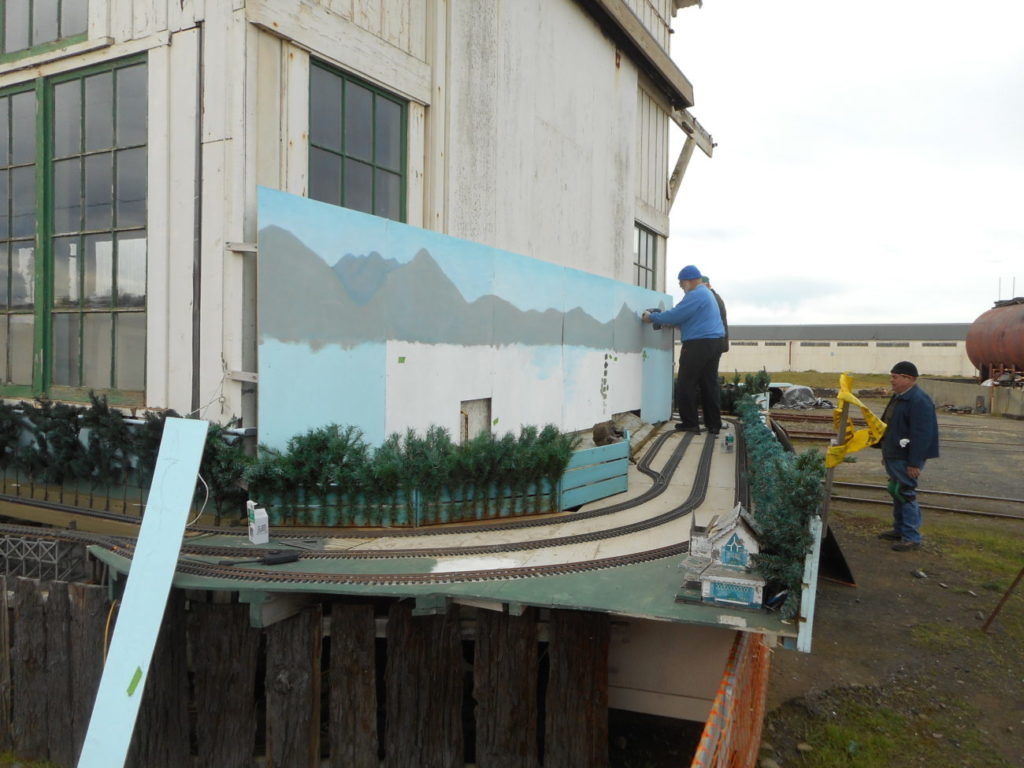Club member Mike Aplet sent these four pics after a recent work session. You can see the shape of the ridge taking place as the forms are put in place. The loco and the log car in the pics is being used to ensure there is adequate clearance between the track and the scenery.
Monthly Archives: February 2017
West Wall – Hillside being created using cement
Rebuilding the Virgin Creek Trestle on the (G Scale) Mendocino Coast Model Railroad & Navigation Co.
The Virgin Creek Trestle was the second of the five Trestles on the Ten Mile Branch which were needed to get Union Lumber Company’s (ULC) trains from the mill opposite downtown to the Ten Mile River basin.
We have only one photo of the real Virgin Creek Trestle – this one:

This picture was taken after a severe storm in 1949. The trestle was not repaired but shortened and the remainder turned into a berm with a culvert. We believe this took place in in 1959.
A picture of our first model of the Virgin Creek Trestle is shownj below:

As you can see from the picture we built the model of the trestle with no cross bracing (just as in the picture). We have been told that the trestle MUST have had cross bracing. However NO-ONE produced a picture. So …… the model had no cross bracing!
A decision was made to replace the eight year old trestle which had suffered the ravages of the Fort Bragg salt air (the layout is but a half mile from the sea), the UV and the winter rains. Here’s how we did it:
The old concrete and trestle has been removed ……..

The footings for the new trestle are in pace:

Here you can see the south end abutment and footings for the bents:

The new north end abutment and bents:

Here’s the new trestle virtually complete:

The new trestle (unlike the old) even has Virgin Creek:

West Wall – Hillside Construction
Our layout is within half a mile of the Pacific Ocean. Between us and the sea is empty land once the site of the largest mill in Mendocino County – the Union Lumber Company. As they say, we are exposed to the elements. Our initial efforts to build hillsides used paper, cardboard, chicken wire and plaster. Diaster.
The method which works best for us is to make forms for the contours of the hillside or gullies, cover the forms with plastic sheeting, cover that with steel mesh and then make concrete the consistency of plasticine and work it into the mesh. Once dried you can paint it.
In these pics you can see the forms being put in place along the west wall for a hillside with a gully coming down and under the railroad track. We use plywood – mostly scrap and some new. We do NOT use nails – too difficult to get out if we change our mind – which we do – a lot!!!!.
Detailing a MOW (Maintenance of Way) G Scale Flat Car
Outside North Wall Backdrop
Using material salvaged from Club Member Dan Fesslers defunct garden railroad, mistints acquired at modest cost from Norvells – our local paint store and the artistic skills of Club Member Ginny Cooper the first of three layers of the backdrop for the scene to be on the north wall of the building that houses our layout has been put in place.

Frank and Roger installing panel number 5. Jim Williams, on the right, is the foreman of the ground crew.
The finished backdrop will be 22 foot six long and 5 foot high.
